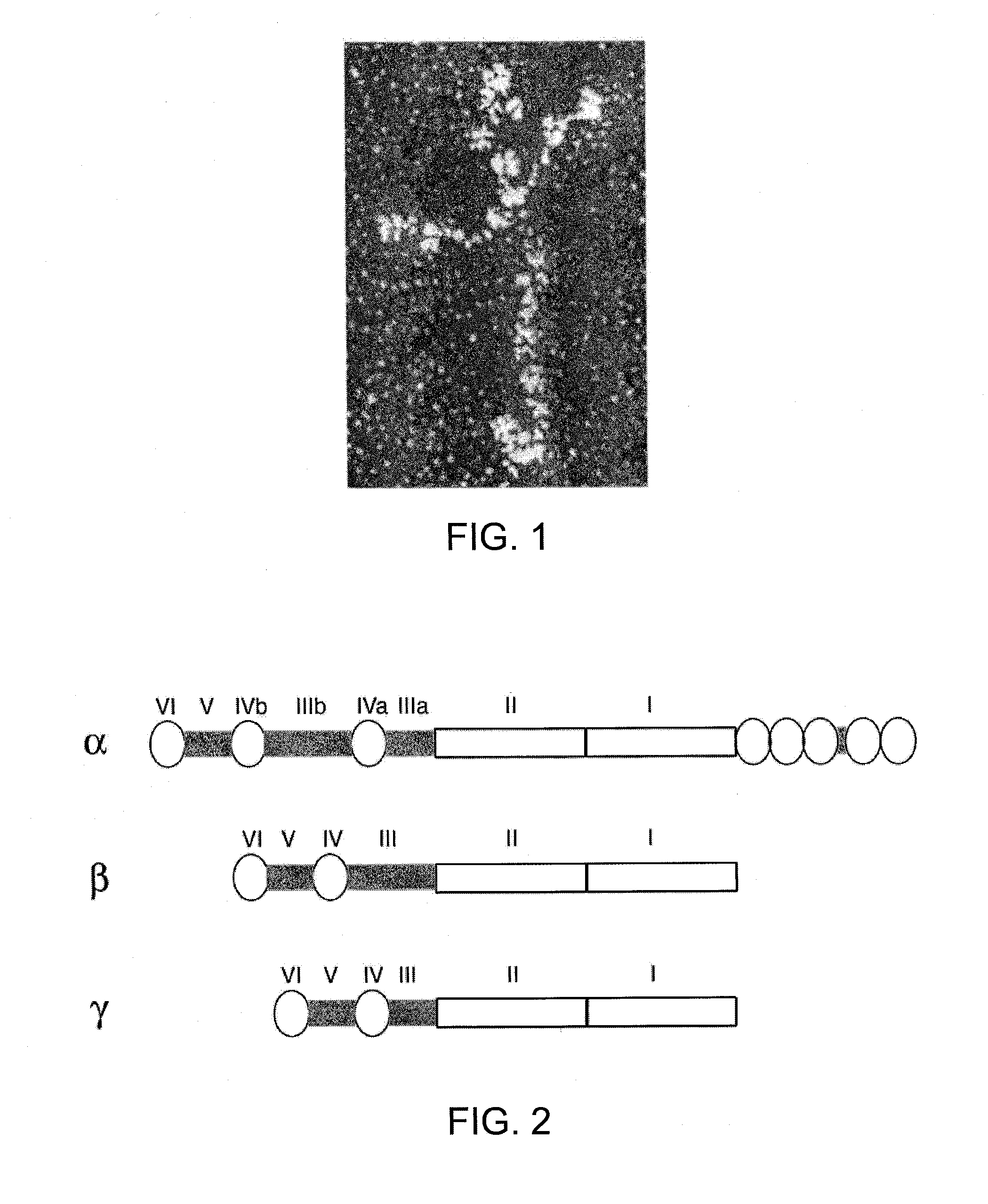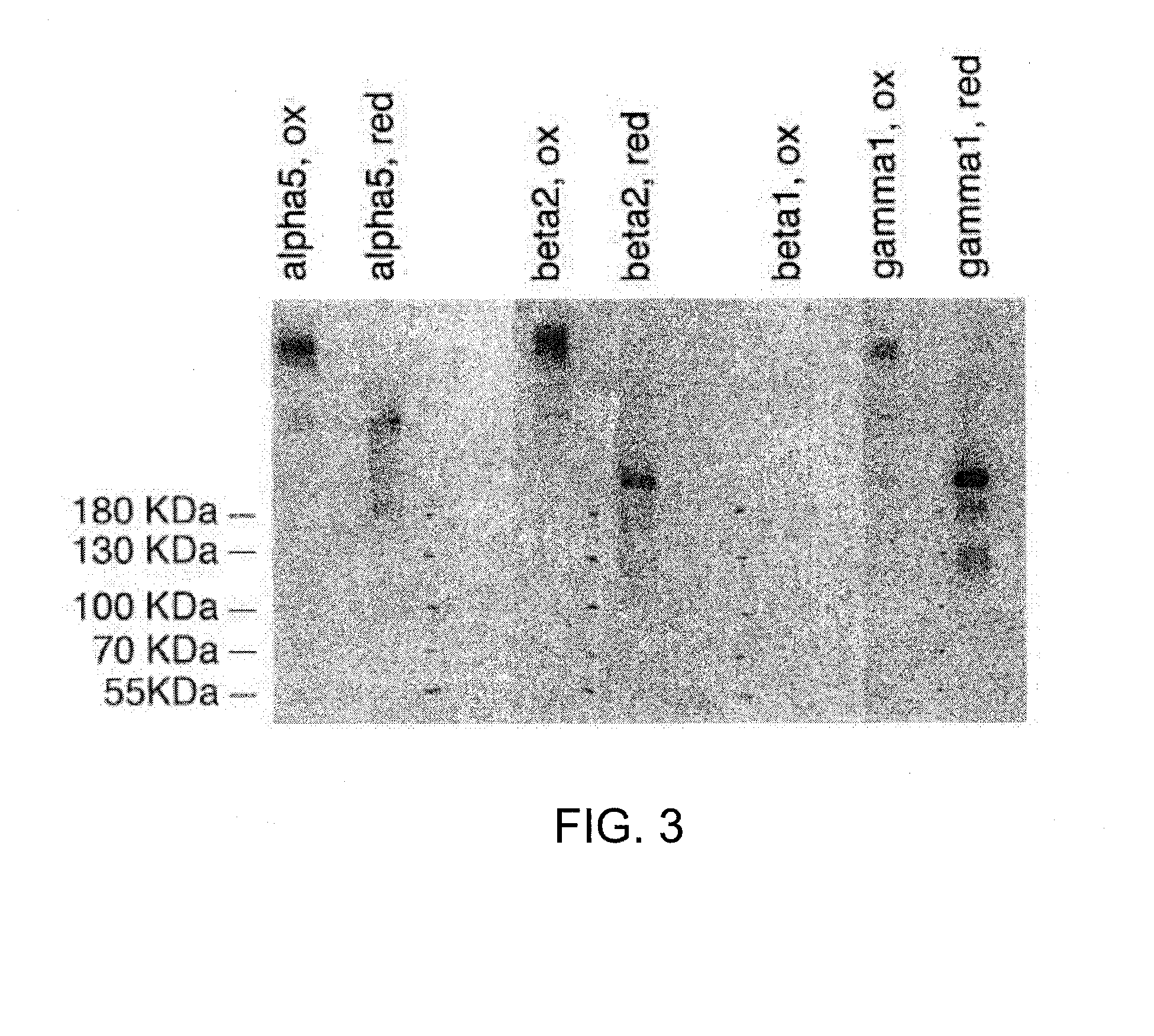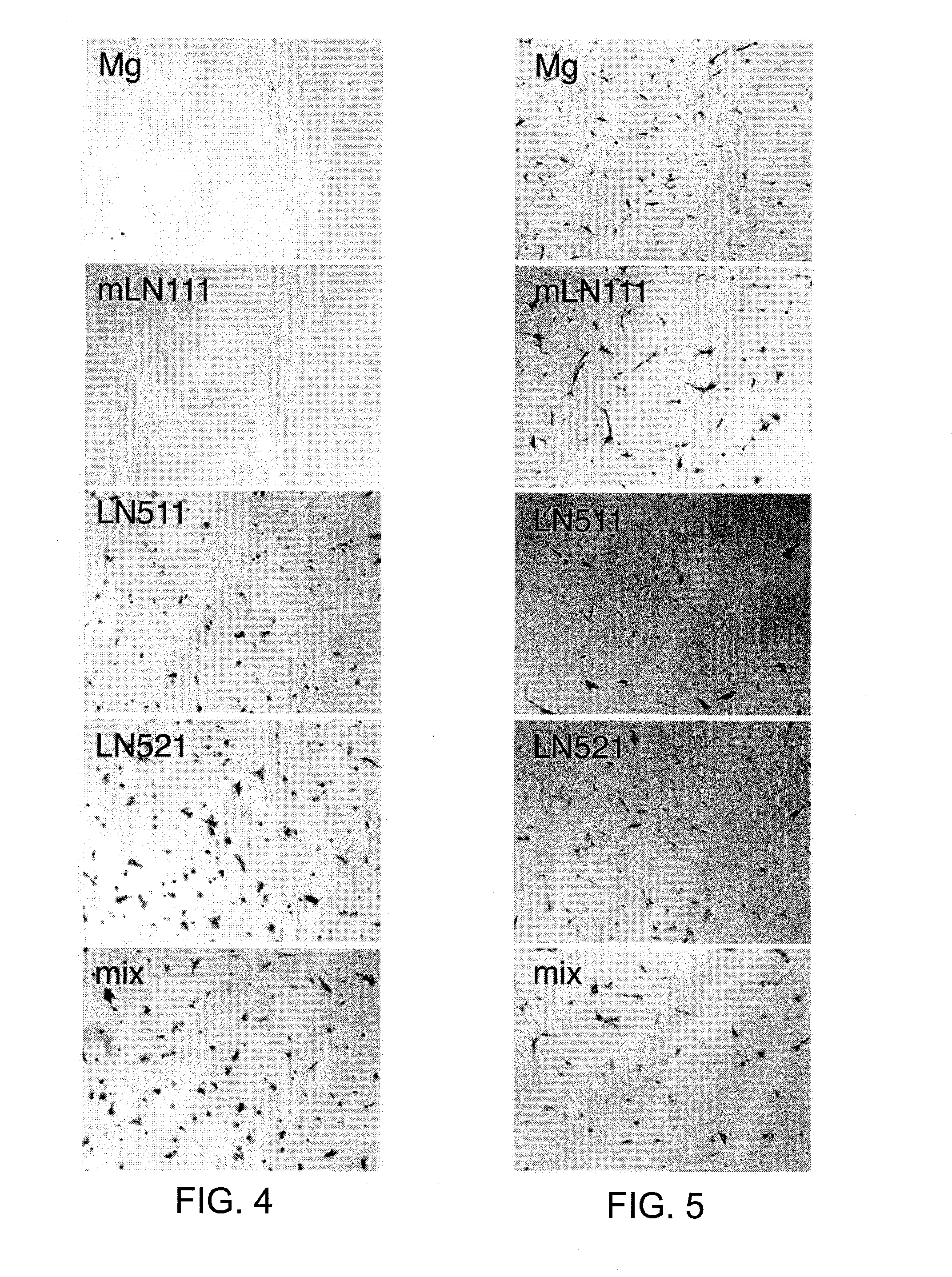Methods of enhancing genetic diagnosis
a genetic diagnosis and genetic technology, applied in the field of cell biology, cell differentiation, cell therapy, etc., can solve the problems of slow growth of hes cells in clusters, and reducing the reliability of experiments, so as to facilitate scientific and clinical applications, fast and economically efficient scale-up, the effect of short tim
- Summary
- Abstract
- Description
- Claims
- Application Information
AI Technical Summary
Benefits of technology
Problems solved by technology
Method used
Image
Examples
example 1
Results for Example 1
[0161]To find out how different cell culture coatings affect single cell survival of human ES cells in O3 medium without any additives, we completely dissociated HS181 cells and plated them on either Matrigel, mouse laminin-111, human r-laminin-511, human r-laminin-521, or a mixture of r-laminin-511 and r-laminin-521. The results are seen in FIG. 4. As expected, almost no cells remained attached to Matrigel or mouse laminin-111 by 24 hours after plating. In contrast, the cells on human r-laminin-521, the mixture, and at a less extent on human r-laminin-511 survived.
[0162]The experiment was repeated on human ES cells in O3 medium treated with ROCK inhibitor Y-27632. These results are seen in FIG. 5. The stem cells remained attached on all 5 coatings.
[0163]To quantify this effect, we performed cell adhesion experiments on all of the above-mentioned coatings at 1 hour and 1 day after plating (i.e., each of the five coatings, with and without Y-27632). FIG. 6 shows ...
example 2
[0169]In this Example 2, expressed and purified recombinant LN-521 that was also expressed in pluripotent hES cells was studied for its effects on cultured hES and iPS cells. The results showed that LN-521, alone, strongly supports self-renewal of pluripotent hES and iPS cells, and, importantly, it allows survival of pluripotent stem cells following plating of trypsinized stem cells in single cell suspension on LN-521 at high dilutions. The effects of LN-521 were shown to be mediated by signaling via α6β1 integrin through induction of hES cell migration and PI3K / Akt pathway activation. The results may be applied for an effective and even automated expansion method for large-scale production of pluripotent hES and iPS cells, as well as for development of new medium formulations for self-renewal of pluripotent stem cells. The new hES / hiPS cell culture method described here closely resembles standard cell culture methods, e.g. that are used to culture fibroblasts, and, therefore, it do...
example 3
[0224]Human embryonic stem cells were cultured upon a laminin-521 substrate in two different cell culture mediums. The two cell culture mediums differed in the amount of bFGF, 3.9 ng / ml and 100 ng / ml.
[0225]FIG. 22 shows the growth curve of HS181 hES cells cultured in an 03 medium comprising 3.9 ng / mL of bFGF with a laminin-521 substrate after 5 passages (40 days) in solid black. The O3 medium was a variant of the commercially available chemically defined mTeSR1 medium with bovine serum albumin as the only animal derived component. The growth curve of HS181 hES cells cultured in an O3 medium comprising 100 ng / mL of bFGF with a laminin-521 substrate is shown in dashes. The cells were dissociated into single cell suspension for passaging. As seen here, the growth curve for the lower amount of bFGF was as good as or better than the higher amount of bFGF.
[0226]FIG. 23 shows the relative amount of mRNA transcripts for pluripotency markers Oct4 and Nanog after 5 passages (40 days) for both...
PUM
| Property | Measurement | Unit |
|---|---|---|
| concentration | aaaaa | aaaaa |
| genetic disorder | aaaaa | aaaaa |
| weight ratio | aaaaa | aaaaa |
Abstract
Description
Claims
Application Information
 Login to View More
Login to View More - R&D
- Intellectual Property
- Life Sciences
- Materials
- Tech Scout
- Unparalleled Data Quality
- Higher Quality Content
- 60% Fewer Hallucinations
Browse by: Latest US Patents, China's latest patents, Technical Efficacy Thesaurus, Application Domain, Technology Topic, Popular Technical Reports.
© 2025 PatSnap. All rights reserved.Legal|Privacy policy|Modern Slavery Act Transparency Statement|Sitemap|About US| Contact US: help@patsnap.com



